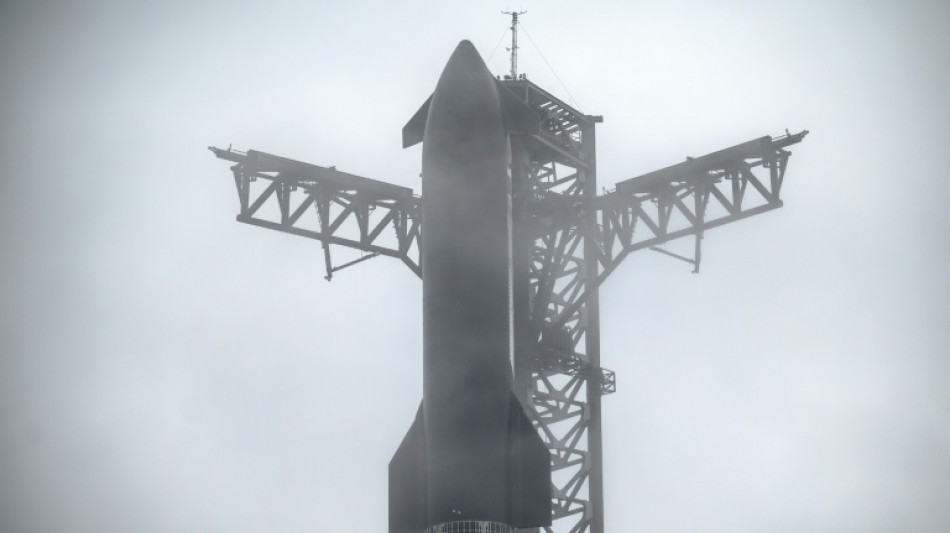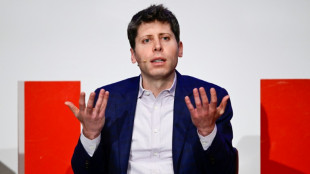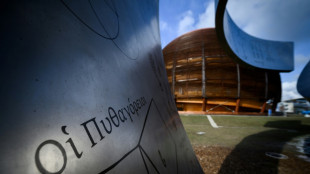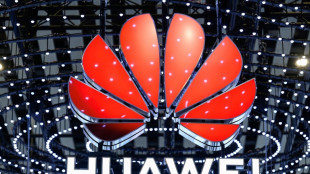

Musk's Starship set for launch after Bezos orbital triumph
The rivalry between the world's two richest men is going cosmic.
After Jeff Bezos's Blue Origin nailed its first-ever orbital flight, Elon Musk's SpaceX is seizing back the spotlight on Thursday with the latest launch of Starship, the gargantuan next-generation rocket that could one day ferry humans to Mars.
For test seven, SpaceX has rolled out a taller, improved version of the largest and most powerful launch vehicle ever built. A 60-minute launch window from the company's Starbase in Boca Chica, Texas, opens at 4:00 pm (2200 GMT).
Space enthusiasts will be eager to see if SpaceX can replicate the stunning feat of catching the first-stage Super Heavy booster in the launch tower's "chopstick" arms about seven minutes after liftoff.
The maneuver was successful in October but not during the following flight in November -- witnessed by President-elect Donald Trump, a key political ally of Musk -- when Super Heavy made a controlled splashdown in the Gulf of Mexico instead.
Adding to the pressure, Blue Origin's massive New Glenn rocket reached orbital space for the first time overnight, a potential turning point in the commercial space race.
SpaceX has long dominated orbital launches with its Falcon 9, swallowing up contracts from private industry, the Pentagon, and NASA. Blue Origin, meanwhile, had been restricted to suborbital hops on its small New Shepard rockets.
With New Glenn, which slots between Falcon 9 and Falcon Heavy, it aims to crack open the market.
Although the two tech titans have had a contentious past, Musk congratulated Bezos "on reaching orbit on the first attempt," and Bezos returned the goodwill a few hours later. "Good luck today @elonmusk and the whole spacex team!!" the Amazon founder wrote on X.
- Starship Upgrades -
For this flight, SpaceX announced, it had implemented "hardware upgrades to the launch and catch tower to increase reliability for booster catch," including enhancements to sensor protections on the chopsticks damaged during the last launch.
Starship itself has also undergone tweaks and now stands at 403 feet (123 meters) tall -- about 100 feet higher than the Statue of Liberty.
Upgrades include a redesigned upper-stage propulsion system that can carry 25 percent more propellant, along with slimmer, repositioned forward flaps to reduce exposure to heat during reentry.
For the first time, Starship will deploy 10 Starlink simulators, comparable in size and weight to the company's internet satellites. Both the simulators and Starship's upper stage will splash down in the Indian Ocean about an hour after launch.
While Falcon rockets remain steadfast workhorses, SpaceX has made clear it sees Starship as its future. Test flights currently cost around $90 million, according to Payload Research, though Musk aims to drive that down to $10 million per launch.
The first three test flights ended in dramatic explosions, resulting in the loss of vehicles. However, SpaceX has rapidly iterated on its design, reflecting its "fail fast, learn fast" philosophy.
Musk is aiming to drastically ramp up the frequency of tests, requesting permission from the Federal Aviation Administration to carry out 25 in 2025, compared to just four in 2024.
The agency is holding public meetings on potential environmental and regulatory concerns, amid accusations that SpaceX has harmed ecologically sensitive areas and violated wastewater regulations.
But with Musk now part of Trump's inner circle, the billionaire may find a smoother path under the incoming administration. Meanwhile, Bezos -- along with fellow tech mogul Mark Zuckerberg -- are set to attend the President-elect's inauguration on Monday, hinting at warming ties.
F.Hartmann--MP




